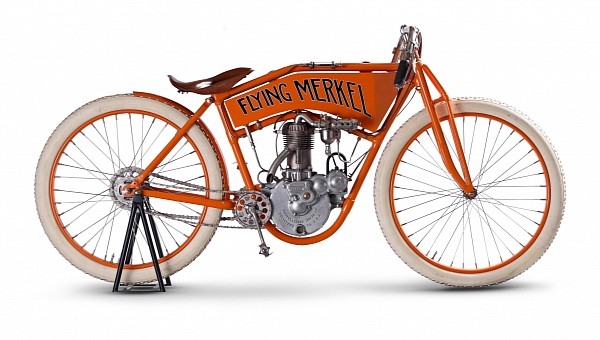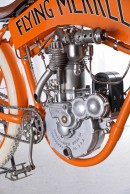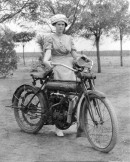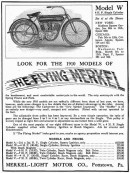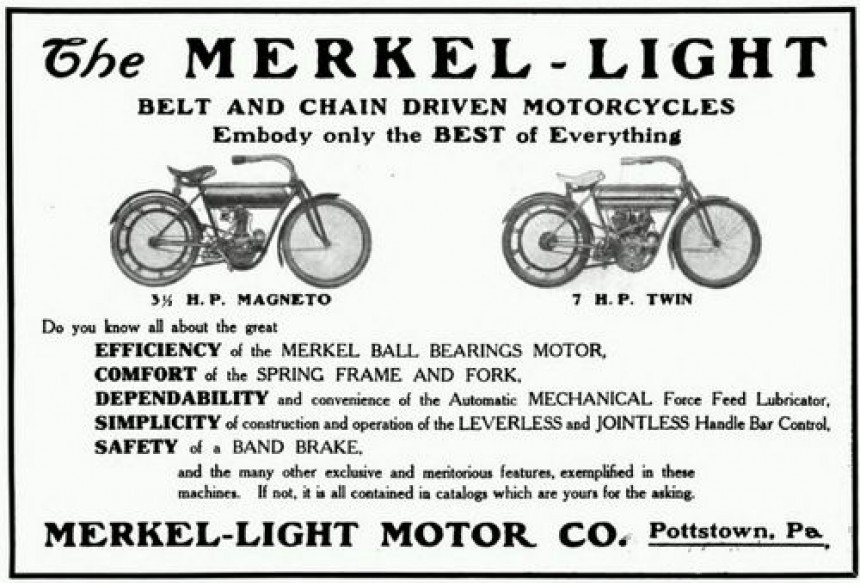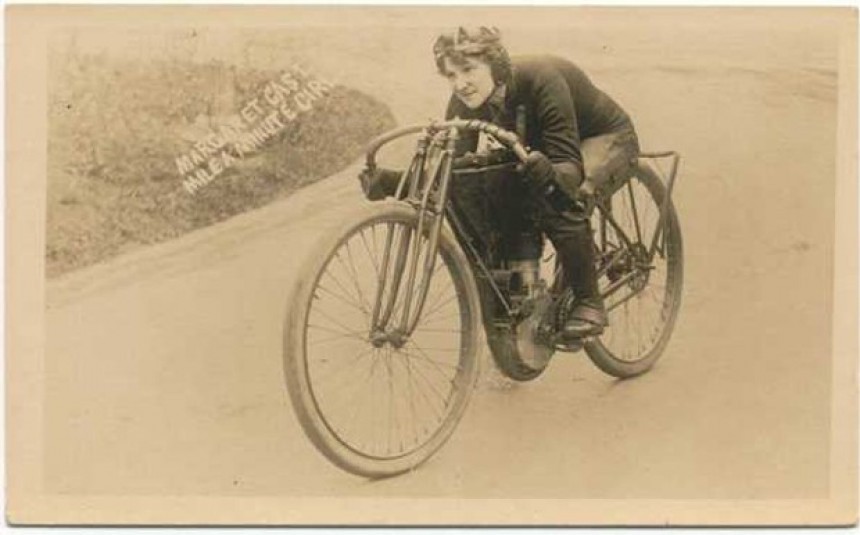Sit back, relax, and join us for a history lesson on the exquisite marque that called Milwaukee, Wisconsin, its home before Harley-Davidson.
Born in Manistee, Michigan, in 1872, Joseph Merkel was a man with scores of groundbreaking ideas and a rock-solid work ethic. After he’d accustomed himself to metalworking, Merkel went on to study mechanical engineering at the Michigan Agricultural College (now Michigan State University) in his late teens, and he was subsequently employed as a draftsman in Milwaukee by the age of 25.
When the 20th century rolled around, Sir Joseph established a small business producing bicycle components, but he soon began flirting with the concept of mounting internal combustion motors onto their frames. Thus, the very first single-cylinder iteration of the Merkel Motorcycle was born around 1902, kicking off a rapid ascent to stellar yet tragically short-lived greatness.
The company’s founder knew they had to keep innovating in order to stay relevant among the likes of Indian or Harley-Davidson and innovate they did! Racing became an integral part of the brand’s identity in 1905, with its main focus being dirt and broad track competitions. Not long after, many lightbulbs started appearing in the bright mind of Joseph Merkel, and most were decades ahead of their time.
First, a monoshock-type rear suspension arrangement had been developed by 1906, at a time when rigid frames were the norm for just about any other manufacturer. One year later, Merkel took things a step further and created what was essentially an early incarnation of telescopic forks employing twin internal springs. Such developments would later spawn the slogan “All roads are smooth to The Flying Merkel.”
Of course, this was a bold claim in an age when the word “road” meant some bumpy mess barely suitable for anything but horses. The advancements didn’t end there, however, as the engines found on Merkel’s bikes employed high-quality ball bearings of German origin instead of the cheaper, more common bronze or babbitt units.
For the boutique marque to survive in an increasingly competitive market, it merged with Light Motor Co. and transferred operations to Pottstown, Pennsylvania, in 1908. It took them two more years to come up with a V-twin mill producing about seven horsepower, while their single made a blistering 3.5 ponies. Laugh if you will, but those were pretty much superbike numbers over a century ago.
As opposed to the primitive atmospheric valve setup used by most two-wheeled contraptions at the time, some Merkels received cam-driven inlet valves – yet another feature considered futuristic back then. Right after the twin-cylinder engines and new valvetrain configurations arrived on the scene, motorcycles from this brand became known as The Flying Merkels.
Oh, and in case you didn’t know: bikes produced circa 1910 required one to manually pump oil into their powerplants to keep things lubricated. Joseph Merkel was unsatisfied with this whole ordeal, so he designed a self-lubricating system actuated in conjunction with the throttle. Sure enough, all the ingenious tech that made its way to the company’s machines over the years helped summon oodles of racing success.
Riders such as Maldwyn Jones, Fred Whittler, and Margaret Gast piloted Flying Merkels to victory after victory, popularizing their fast and dependable nature on the racetrack. The novel things which characterized such entities came at a pretty hefty, increasingly uncompetitive cost, though, and even the 1911 merger with Miami Cycle and Manufacturing Co. couldn't keep the firm afloat for much longer.
Slow sales were becoming a real struggle for sure, but the outbreak of the First World War was the final nail in Merkel’s coffin. The founder had already left the company by the time production ceased in 1917, and little is known about his life beyond the early ‘20s. Nowadays, finding a Flying Merkel for sale is next to impossible, not to mention the eye-watering sums you’d need if one were to actually cross your path!
In the colored photos atop these paragraphs, one may see a race-spec 498cc single-cylinder model from 1911, allegedly similar to that of Margaret Gast. It sold for just over £33k (or about $50,000) via Bonhams in 2015, though V-twin Merkels loaded with more of the fancy goodies we’ve just covered can easily fetch a lot more. All things considered, we hope to see more enthusiasts familiarized with this firm’s tale because it’s a very inspiring one indeed.
When the 20th century rolled around, Sir Joseph established a small business producing bicycle components, but he soon began flirting with the concept of mounting internal combustion motors onto their frames. Thus, the very first single-cylinder iteration of the Merkel Motorcycle was born around 1902, kicking off a rapid ascent to stellar yet tragically short-lived greatness.
The company’s founder knew they had to keep innovating in order to stay relevant among the likes of Indian or Harley-Davidson and innovate they did! Racing became an integral part of the brand’s identity in 1905, with its main focus being dirt and broad track competitions. Not long after, many lightbulbs started appearing in the bright mind of Joseph Merkel, and most were decades ahead of their time.
First, a monoshock-type rear suspension arrangement had been developed by 1906, at a time when rigid frames were the norm for just about any other manufacturer. One year later, Merkel took things a step further and created what was essentially an early incarnation of telescopic forks employing twin internal springs. Such developments would later spawn the slogan “All roads are smooth to The Flying Merkel.”
For the boutique marque to survive in an increasingly competitive market, it merged with Light Motor Co. and transferred operations to Pottstown, Pennsylvania, in 1908. It took them two more years to come up with a V-twin mill producing about seven horsepower, while their single made a blistering 3.5 ponies. Laugh if you will, but those were pretty much superbike numbers over a century ago.
As opposed to the primitive atmospheric valve setup used by most two-wheeled contraptions at the time, some Merkels received cam-driven inlet valves – yet another feature considered futuristic back then. Right after the twin-cylinder engines and new valvetrain configurations arrived on the scene, motorcycles from this brand became known as The Flying Merkels.
Riders such as Maldwyn Jones, Fred Whittler, and Margaret Gast piloted Flying Merkels to victory after victory, popularizing their fast and dependable nature on the racetrack. The novel things which characterized such entities came at a pretty hefty, increasingly uncompetitive cost, though, and even the 1911 merger with Miami Cycle and Manufacturing Co. couldn't keep the firm afloat for much longer.
Slow sales were becoming a real struggle for sure, but the outbreak of the First World War was the final nail in Merkel’s coffin. The founder had already left the company by the time production ceased in 1917, and little is known about his life beyond the early ‘20s. Nowadays, finding a Flying Merkel for sale is next to impossible, not to mention the eye-watering sums you’d need if one were to actually cross your path!
In the colored photos atop these paragraphs, one may see a race-spec 498cc single-cylinder model from 1911, allegedly similar to that of Margaret Gast. It sold for just over £33k (or about $50,000) via Bonhams in 2015, though V-twin Merkels loaded with more of the fancy goodies we’ve just covered can easily fetch a lot more. All things considered, we hope to see more enthusiasts familiarized with this firm’s tale because it’s a very inspiring one indeed.
